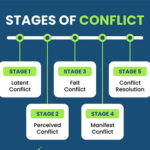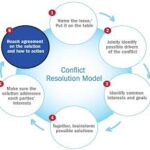Conflict costs refer to the expenses and losses that arise due to conflicts within the workplace. These costs can significantly affect both the individual employees involved and the organization as a whole.
Types of Conflict Costs
-
Quantitative Conflict Costs
These are measurable, tangible costs that can directly impact the company’s bottom line. Some examples include:-
Lost Working Time: Time spent in disputes or disengaged from work due to conflict reduces productivity.
-
Legal Costs: Legal disputes arising from conflicts may lead to financial losses from attorney fees, settlements, or litigation costs.
-
Failed Projects: Conflicts may hinder collaboration and communication, leading to project delays, errors, or even project cancellations.
-
-
Qualitative Conflict Costs
These are intangible costs that impact the workplace environment and employee morale. Examples include:-
Loss of Quality of Life: The negative emotional impact on employees due to ongoing conflicts, leading to a stressful and less enjoyable work atmosphere.
-
Reduced Job Satisfaction: Constant conflict can diminish employee morale, reducing satisfaction with their job and work environment.
-
Lack of Respect from Colleagues: When conflicts arise, they can create divisions within teams, causing interpersonal tension and a lack of mutual respect among employees.
-
Impact on Organizational Health
Both quantitative and qualitative costs of conflict can have far-reaching effects on an organization, including higher turnover rates, reduced employee engagement, and lower productivity. Addressing conflicts early and fostering a positive workplace culture can minimize these costs and promote a healthier work environment.
« Back to Glossary Index





![15 Employee Offboarding Templates That Save Hours of HR Time [Free Downloads] 15 Employee Offboarding Templates That Save Hours of HR Time [Free Downloads]](https://i1.wp.com/www.hrcloud.com/hubfs/Header.png?w=150&resize=150,100&ssl=1)
